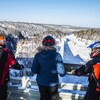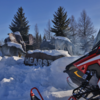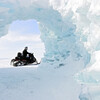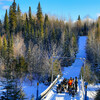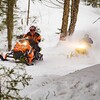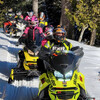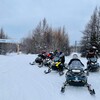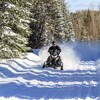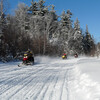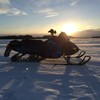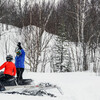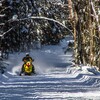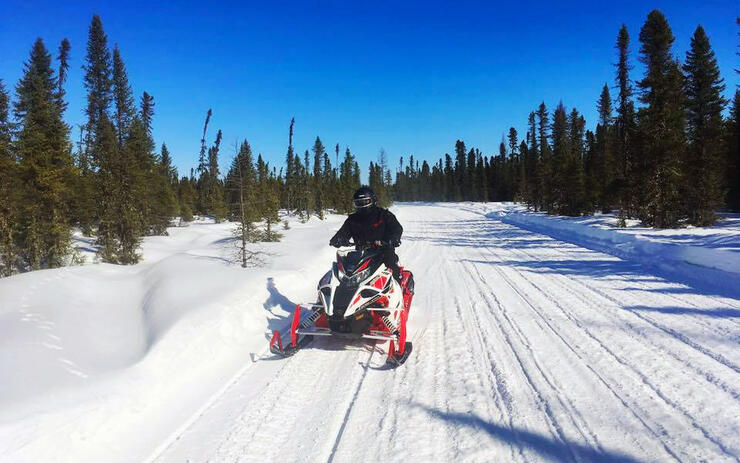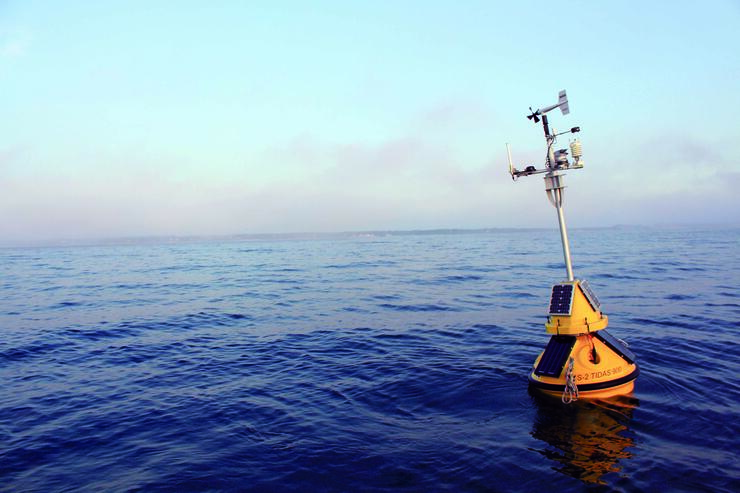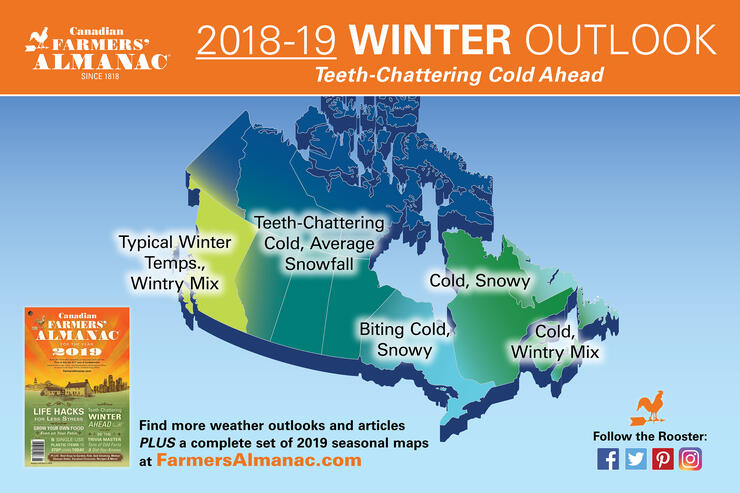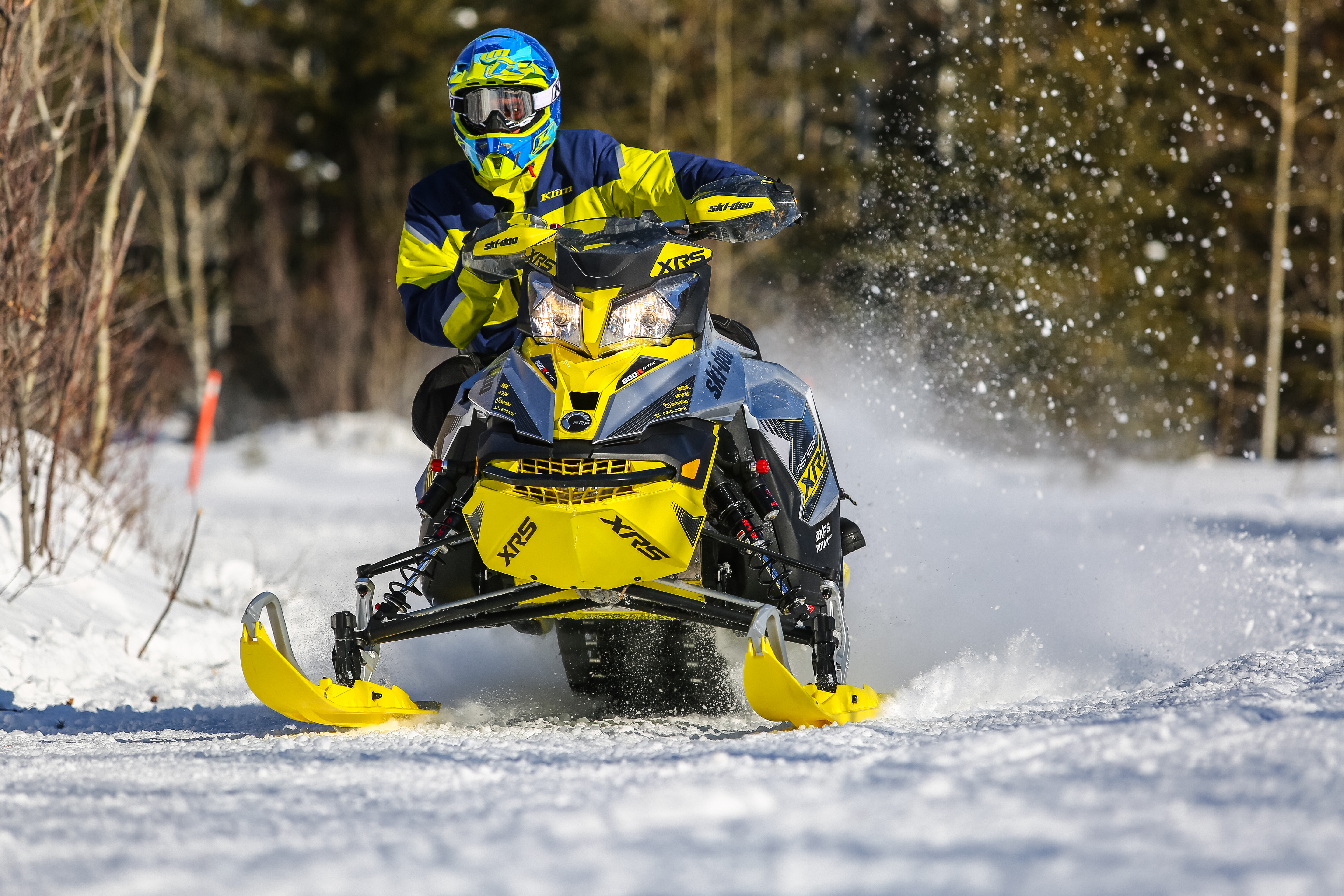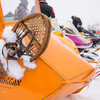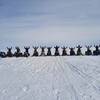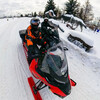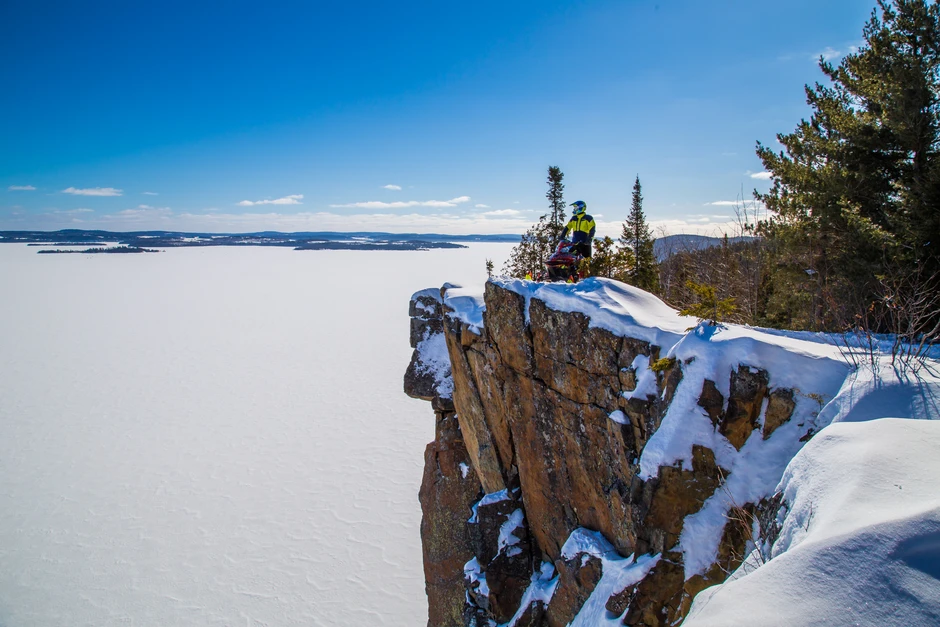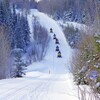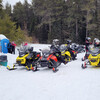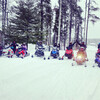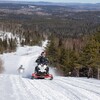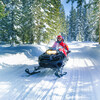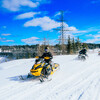
Please note this page may no longer be up to date. For new stories about Northern Ontario visit us here.
Ontario Snowmobilers in for a Great Season Ahead?
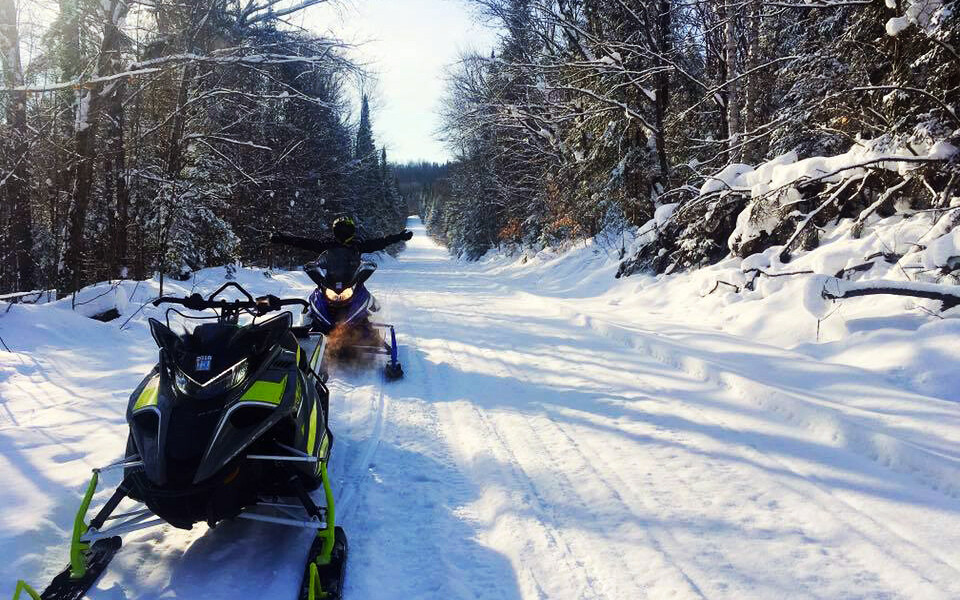
Going into this, the sixth year of doing our winter weather forecast for Ontario snowmobilers, I admit I’m struggling to put it together. Why? Well, as many of you are aware, the past few winters have been tough on snowmobilers. You can imagine the blasts I’ve taken when my predictions haven’t exactly aligned with a rider’s expectations or hopes. Even when all the science and age-old wisdom pointed towards the perfect sledding season, I’ve been met with little consistency and dependability on the part of Old Man Winter. It seems we can no longer count on the “good ole-fashioned Canadian Winter” to take care of the entire province of Ontario. Nevertheless, another riding season is just around the corner.
To be a snowmobiler you need to have hope. You have to be confident enough to go ahead and get your machine shined up, purchase that new piece of gear, buy the permit, and book in advance that trip of a lifetime. Otherwise, you could be left watching from the sidelines as the most exciting time of the year rolls by without you.
It always snows somewhere in Ontario and whether it's a 2- or 7-hour drive it's always worth it
As with previous chronicles, the goal of this article is to sift out the slushy irrelevant information and provide you with only the best of the best. Again this year, I’ve researched several different sources to support my winter prediction and to give you insight into the happenings in your part of Ontario.
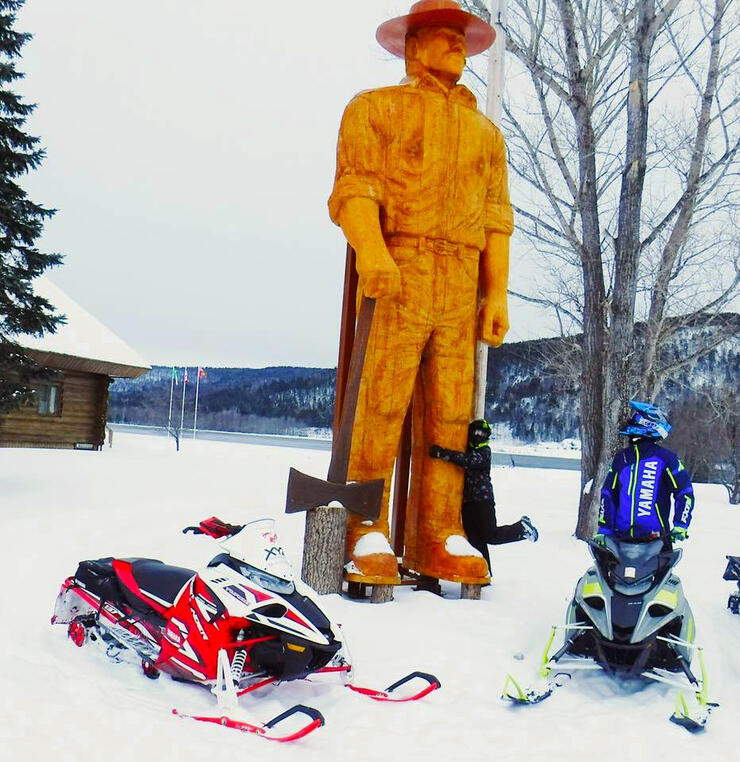
After a Summer Like this
This past summer has been one of sun, heat, and fire, a sharp contrast to the summer of 2017 which was dubbed “The Summer The Sun Forgot,” where precipitation records were broken across the province. The summer of 2018 will go down as one of the best for boating, swimming, and working on your tan. It will also be remembered as one of the worst for forest fires, with over 1,000 fires recorded, several of which burned out of control and affected thousands of residents and businesses.
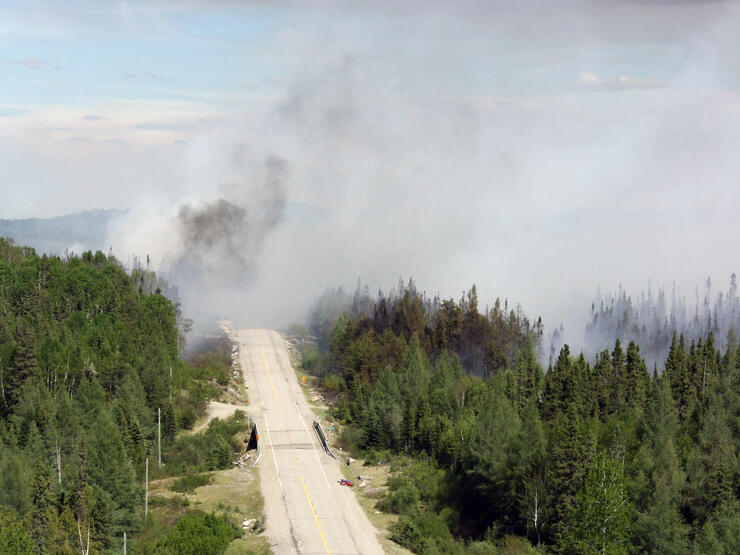
To give you an idea, that’s an increase of 87% from normal forest fire activity in Ontario over a 10-year average. The media was quick to report, almost sensationalizing these somewhat natural fire occurrences, driving potential tourists away from entire districts even though “out of control” fires burned in some cases well over 100 km away from popular vacation spots such as lodges, resorts, and campgrounds.
The fire happenings of the summer of 2018 are, without a doubt, a reflection of extreme weather characteristics that we're seeing more and more of. Nevertheless, this was a hot and dry summer which is in sharp contrast to the previous one, therefore I suspect the cold and wet will come.

WHAT THE EXPERTS ARE SAYING
Senior climatologist David Phillips said that Environment Canada is expecting this winter will be milder than normal thanks to El Nino brewing in the Pacific Ocean—more on that later. Phillips reports that it’s a bit uncertain right now, but believes that the winter of 2018-2019 will be easier, shorter, and not as tough as last year. By no means is Environment Canada cancelling winter—we do live in the second coldest and snowiest country in the world!— but the lead-up to it will be gradual and the summer-like weather will continue for some time. Don’t expect a sudden switch from summer to winter.
Phillips also reports that our warmer-than-normal summer has raised the water temperatures in our lakes and rivers. As fall matures, these bodies will hold the heat, creating comfortable fall conditions. Anyone for a round of golf without the bugs? He also reports that weather patterns have become significantly more complicated since he began studying climatology over 30 years ago. He says that the jet streams are changing, ice is melting in the North, and it’s affecting historical modeling and our ability to make accurate predictions. Phillips noted in a CTV article that “I think weird, wild, and wacky is the way it goes. The new normal is to expect the unexpected.”
Great Lakes water levels appear to be holding their upwards five-year trend of above-average levels. The U.S. Army Corps of Engineers reported In January of 2018 that they predict Lake Superior will break a record high level set in the mid-1980s. This is actually good to hear after concerns over record low levels for some of the Great Lakes in 2013-2014.
Call Your Buoy-Friend
You can find a list of every buoy in the Great Lakes here. Text the buoy number of your choice to 734-418-7299 for the latest observations. (Though you can’t text every buoy and get a response; only buoys with all-numeric names.)
To get a “bearing” on where the great lakes are right now, I texted a few buoys in the Great Lakes, here are my results.
- Southern Lake Huron - #45149 – September 5, 8 pm – Air Temp – 76.8F, Water Temp 73.2F
- North Lake Huron - #45003 – September 5, 8 pm – Air Temp – 68.5F, Water Temp 67.8F
- South Georgian Bay - #45143 – September 5, 8 pm – Air Temp – 72.1F, Water Temp 71.9F
- North Channel - #45154 – September 5, 8 pm – Air Temp – 69.6F, Water Temp 68.7F
- East Superior #45004 - September 5, 8 pm – Air Temp – 57.2F, Water Temp 55.2F
So as we can see above, even in September water temperatures still have a ways to go. The Great Lakes, including Lake Superior, the coldest and deepest, are holding heat. By the time you’re reading this article, time will have passed since my texts to these buoys, so give it a try yourself and see the differences in water temps. It will also be interesting to text these buoys to check their status in mid-winter for an indication of how long winter will last, as well as the potential for serious lake-effect snow.
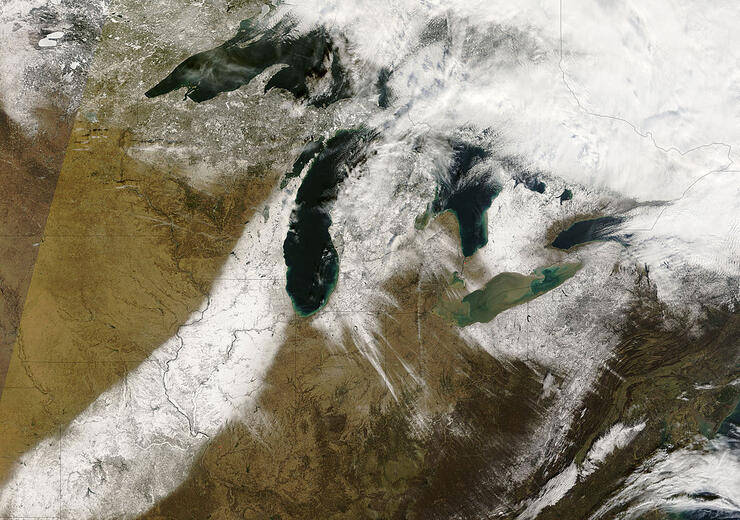
We know that if the Great Lakes freeze over completely, it has a major effect on the lake-effect snow machine. We also know that if water temperatures are too warm they, in turn, warm the air, which can be the difference between rain and snow in some parts of the province. Let’s hope for the perfect water temps and a steady breeze.
WHAT WILL EL NIñO BRING?
The National Oceanic and Atmospheric Administration (NOAA) released an El Niño watch for the Northern Hemisphere citing that there is a 65-70% of an El Niño oceanic event during the winter of 2018-2019. It’s been a few years since we’ve experienced El Niño, and honestly, it’s not a favorable climatic event for snowmobiling here in Ontario. Generally, it means we’re in for much warmer than average temperatures.
From what forecasters are seeing in the Pacific Ocean it looks like we’re in for a weak to moderate El Niño. This is in comparison to the 2015 event, dubbed a super El Niño, which continued for some 19 months. With this in mind take a look at the two maps below. I’ve used these before in my prediction to help you visualize the effects that El Niño and La Niña have on our Ontario weather. If in fact this winter is impacted by El Niño, let’s hope it’s a weak one and doesn’t send too much warm air our way, or we may be faced with little consistency in snow conditions across the province.
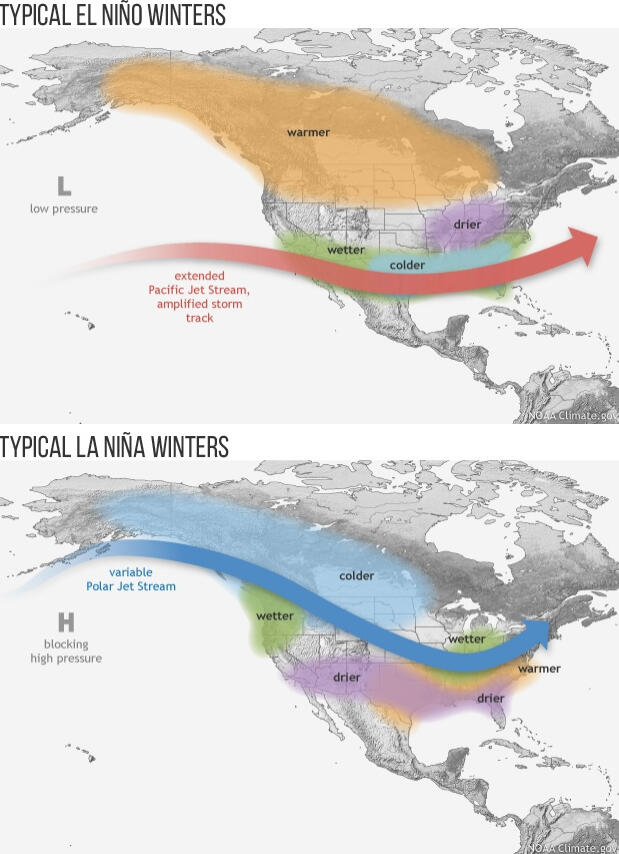
TRIED AND TESTED
Just before Labour Day, the trusted Farmers' Almanac created a buzz when it released its forecast for winter 2019. My social media feed was filled with reports citing their predictions, posts with titles like “biting cold” and “teeth chattering ahead” made headlines. This gets me very excited—especially when the reports come this early. The Almanac predicts that Ontario could receive above-normal amounts of snow! This suggests to me that we’ll see gargantuan lake-effect bands off the Great Lakes. The Almanac also predicts frigid temperatures down to -45 C° (-49° Fahrenheit), with the coldest temperatures occurring in February. I like what the Almanac (with its self-proclaimed 80% accuracy rate) is predicting for us snowmobilers this winter!
IN THE WOODS
Again, this year I reached out to outdoors expert Backroads Bill Steer. Bill is the founder of the Canadian Ecology Centre, and is a professor of geomatics and natural sciences at Nipissing University and Canadore College. Bill is one of most in-touch people I know with the wilds of Ontario, so I truly value his input. Take the opportunity to check out his website. He has great articles on “off the beaten path” adventures.
Bill admitted that it is a little early to collate all the natural signs. However, he reports he’s seeing too many Canada Geese in the air and it's only early September. Bill tells me the thinking here it will be an early start to winter. Bill also told me the squirrels have been super busy collecting, foraging, and preparing, and the leaves haven’t even begun to turn yet.
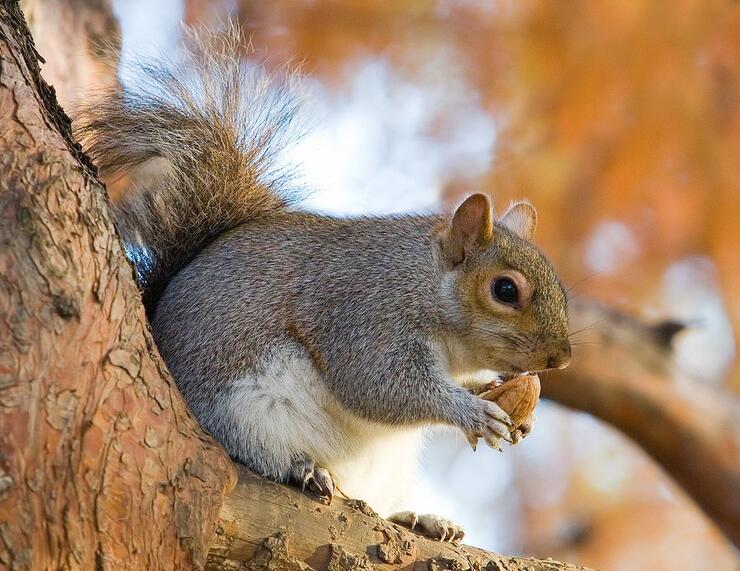
A sign of a forthcoming cold winter that Bill watches for is an overabundance of mud on the beaver lodges. He’s not seeing that this year, which means it may be a mild winter overall. Last year Bill concluded (and was correct) that we were in for a wild winter. As we all recall last winter was a bit of a roller coaster, then we marched into no spring and then into this warm, balmy summer. Bill says he’s going out onto a limb, but will predict an early start to winter with not much snow, and that winter will end mild with an early departure. In like a lion, out like a lamb.
THE PREDICTION
STOCK UP ON FIREWOOD
Even though it looks like we're going into an El Niño winter, I’m thinking we are going to see the return of several polar vortex events, which will bring with them long-lasting periods of double-digit negative temps. The geese are leaving the north early, and the squirrels are hoarding nuts; however, the beavers seem to be keeping clean. My take is to stack the firewood high and get Grandma to knit the kids an extra pair of woolly socks—you’re going to need them.
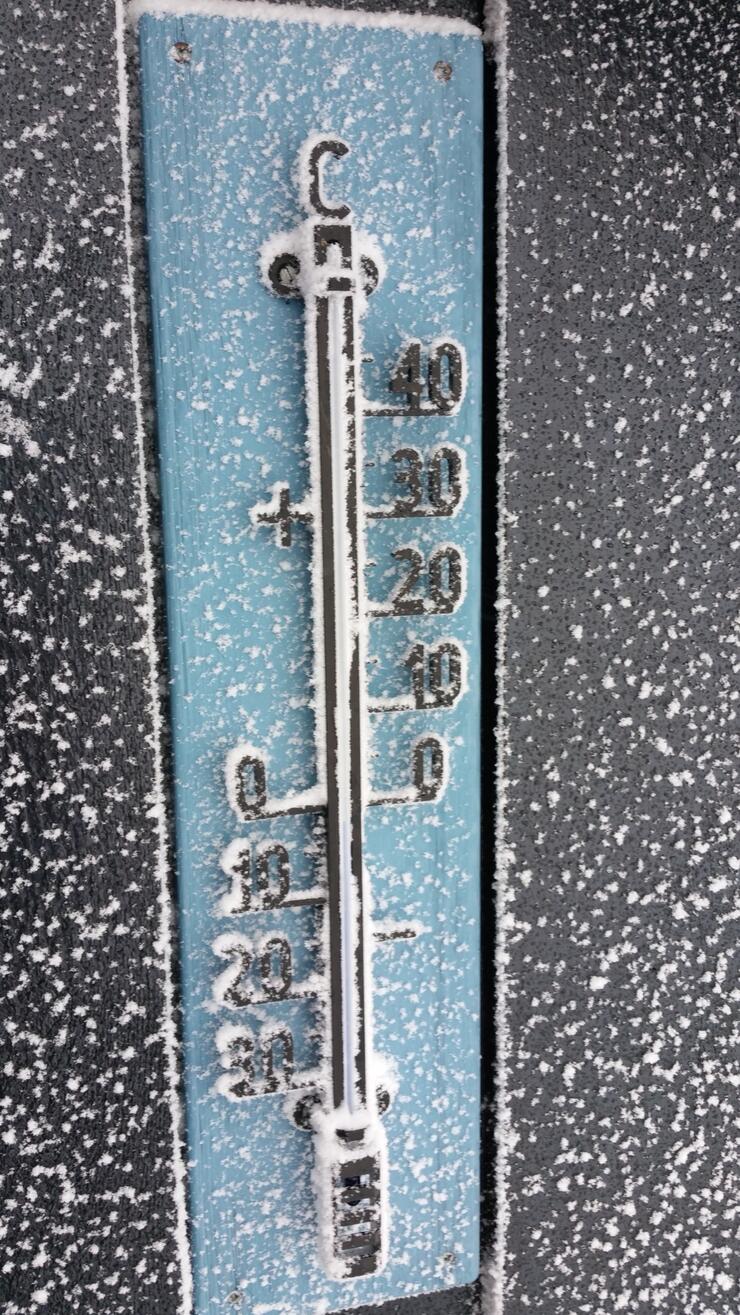
THE WIND OFF THE LAKES
With a hot and dry summer behind us and the heat-soaked Great Lakes, I’m predicting that if the jet stream flows like I think it will, we’re going to see some mega lake-effect snow set up in key sledding regions. Believe it or not, last year we were able to find up to 12 feet of snow in one area where bands consistently set up. Bookmark the Environment Canada radar stations on your phone, and be prepared to load up the truck if you’re in search of virgin and abundant pow! Don’t forget to text the same buoys I did to see how water conditions are changing.
FARMERS VS. MAN OF THE WOODS
It seems as if the almanac and Backroads Bills initial predictions conflict each other; the almanac is predicting “teeth chattering cold ahead” with the coldest period being in February, while Bill is reporting that the natural signs lean more towards a winter with an early start that will be mild and end early. Perhaps we’ll see a combination of Bill’s prediction and that of the old-time Almanac. I’m thinking we may see winter come in like a lion and out like a lamb, which should mean perfect bluebird March and April days up North on the trails!
THE SLEDDER’s PULSE
Snowmobilers are some of the most positive people I know. Resilient, tough, and adaptable, we are not afraid to explore new areas, try new thing and push the limits. I finally had the opportunity to attend Hay Days in Minnesota this year, and I can tell you that the passion for snowmobiling is alive and strong.

I’m pumped to see everyone at the Toronto International Snowmobile, ATV & Powersports Show again this year as it’s always a highlight weekend. Please stop by and say hi to me. Most importantly, snowmobile clubs across the province have been busy all summer long making trail improvements, upgrades on groomers, and working on the business end of snowmobiling for all of us. Permits go on sale October 1, so remember to get yours early. The pulse this year is that snowmobiling is so much more than just riding—it’s a lifestyle, it’s friendship, it’s adventure. Being a snowmobiler is an all-year passion and something to be proud of.
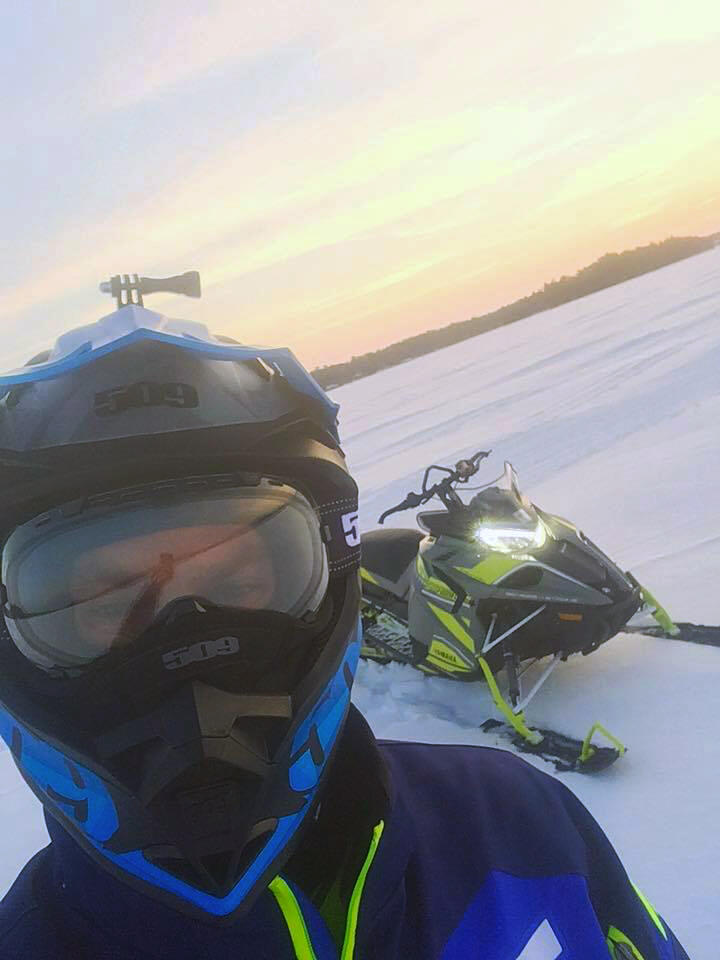
The Last Word
I’m predicting a turbulent winter, full of ups and downs. Where you’re from will dictate how far the Cold vs Warm and Snow vs Rain pendulums will swing. My best advice, given six years now of forecasting, is to get out and ride when the snow is in your backyard and the trails are open. Think about planning a trip up North a bit later in the season—but book your accommodations now, because if the snow melts at home the hotels, motels, and all those great places to stay will be full. I do strongly believe that the traditional snow belt areas are going to see an overabundance of lake-effect snow, and that the far north will once again have riding available well into April (they did last winter). We will see frigid temperatures and the return of one, if not several, polar vortex events.

If there’s one thing you can be sure of in Northern Ontario, it’s the community and hospitality for snowmobilers. It makes sense since, that’s the one place that winter is guaranteed! See you on the trails!
Recommended Articles

Snowmobiling Winter Weather Forecast 2024-2025

The Complete List of Snowmobile Events in Ontario 2024-2025
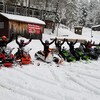
The Best Snowmobile-Friendly Lodges
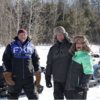
I Rode the Explorers Snow Tour in Ontario and Here’s What It Was Like

Why Ontario is One of the Best Snowmobile Destinations in the World
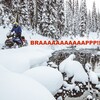
11 TikToks That Prove Ontario is the Best Place To Go Snowmobiling

5 Weekend Snowmobile Getaways Near the GTA
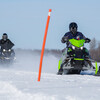
31 Ways To Get In The Know About Snowmobile Trail Riding in Ontario

A Beginner's Guide to Snowmobile Lingo

Snowmobiling the NWOSTA Wilderness Loop in Northwestern Ontario

